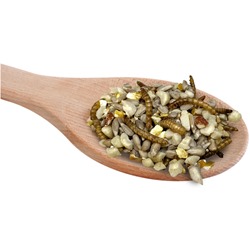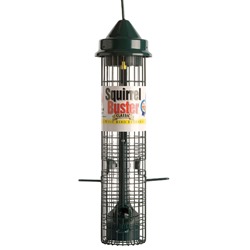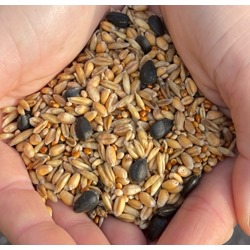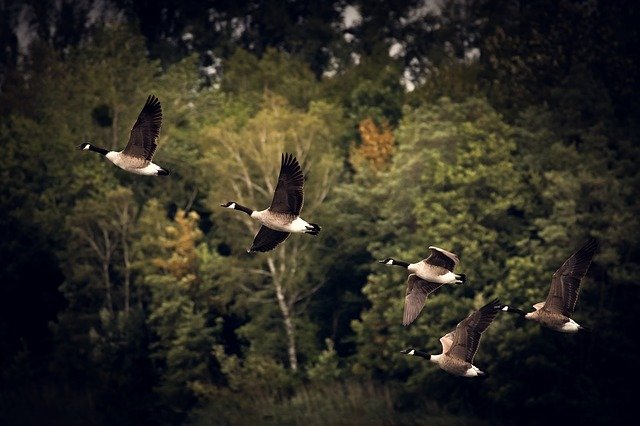
Have you ever looked up to the sky throughout the year and seen a flock of birds flying in formation in the same direction? Well, if you have, the chances are that these birds are migrating from the UK to another location where they can enjoy gentler climates or they're making their way to the UK from another location for the same reason.
But what exactly is migration and why do birds do it? Do all birds migrate or is it only certain species? In this blog, we take a closer look a bird migration to help you better understand why it occurs.
So, without further ado, let's fly right into it!
Why Birds Migrate
The reason behind birds migrating to different locations is to move from places with low or diminishing resources to places with high or increasing resources or for nesting reasons.
Birds that typically nest in the Northern Hemisphere often choose to migrate northward during the spring to make the most out of budding plants, flourishing insect populations and better nesting locations. When winter arrives, these resources begin to decrease and the birds then start to migrate south again.
However, not all birds migrate with a lot of species choosing to stay put in their natural habitats. Why? There are few reasons.
Why Birds Choose to Not Migrate
The process of migration can be a very dangerous one, so it's easy to understand why a lot of birds choose not to do it. By staying put, birds avoid all of the hazards associated with migration including adverse weather conditions, predators and hunting for food. But not just that, there are other benefits to not migrating. These include:
- Raising fledgelings - If a bird doesn't need to migrate, it can spend more time raising its fledgelings and as a result, gives its young bird a better chance of surviving and maturing into a healthy and strong bird. These birds may also choose to raise additional broods later in the season, giving them more offspring to raise population numbers.
- Conserving energy levels - Birds that choose to stay put and not migrate do not need to expend huge levels of energy required to travel. Instead, they can use their energy for other priorities such as defending their territory, foraging for resources, watching out for predators and raising their young.
- Defending their territory - The reason why birds migrate is to take advantage of resources and nesting grounds. Those that choose not to, can make use out of the superior habitats that are left and are then in place to defend them when migrating birds return.
Which Birds Choose to Not Migrate?
It may come as a surprise that the number of birds that choose to not migrate is quite high. At least some species in nearly all scientific bird families avoid the rigours of migration, these include:
- Game birds such as quail, pheasants and wild turkeys.
- Some species of owls including barred and screech.
- Hardy corvids such as ravens, magpies and blue jays.
- Several woodpeckers including red-bellied, pileated and hairy.
- Tits and chickadees.
Different Types of Migration
Now, just because some birds choose to migrate, it doesn't mean they always fly across several countries. Some migrate in different ways for different reasons. Here are some important migration terms that will help to understand migration behaviours a little better.
- Season migration - This migration occurs between breeding and non-breeding ranges and is the most typical type. Summer visiting birds arrive from the south and winter from the north.
- Longitudinal migration - This form of migration is when birds move between eastern and western location and is most common within continental European birds.
- Latitudinal migration - This type of migration is when birds travel from southern locations to northern locations and vice versa.
- Nomadic migration - Nomadic migration occurs as a result of a lack of crucial resources, however birds that perform this type of migration cover much shorter distances and stay within a range that is familiar to them.
- Altitudinal migration - This migration is a movement from high ground to low ground throughout the colder months, typically over short distances.
- Reverse migration - This type of migration is seen mostly during the autumn when young birds become confused and start to travel against their expected route.
These are just a few of the most important migration terms you should know to better understand the behaviour of birds during particular times of the year.
And there we have it! We hope this blog has helped to answer your question "do all birds migrate?" And that we have helped you to understand why some birds do and why some birds don't migrate.
To keep up with more bird news and to never miss a blog post, be sure to follow us across all our socials where we post regular updates for all bird lovers that can't be missed!
Follow us on Twitter > Like us on Facebook >

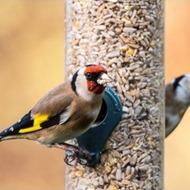 Back
Back Bird Feeders
Bird Feeders  Seed Feeders
Seed Feeders Peanut Feeders
Peanut Feeders Peanut Butter Feeders
Peanut Butter Feeders Suet & Fat Feeders
Suet & Fat Feeders Window Feeders
Window Feeders Hanging Feeders
Hanging Feeders Feeding Stations
Feeding Stations Ground Feeders
Ground Feeders Easy Clean Feeders
Easy Clean Feeders Bird Tables
Bird Tables Seed Trays
Seed Trays Bird Baths & Drinkers
Bird Baths & Drinkers Feeder Accessories
Feeder Accessories Feeder Hygiene
Feeder Hygiene Squirrel Proof Bird Feeders
Squirrel Proof Bird Feeders For the Kids
For the Kids Niger Seed Feeders
Niger Seed Feeders Mealworm Feeders
Mealworm Feeders Bird Food Storage
Bird Food Storage Fat Ball Feeders
Fat Ball Feeders Tube Feeders
Tube Feeders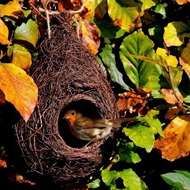



 Our Farm
Our Farm Contact Us















